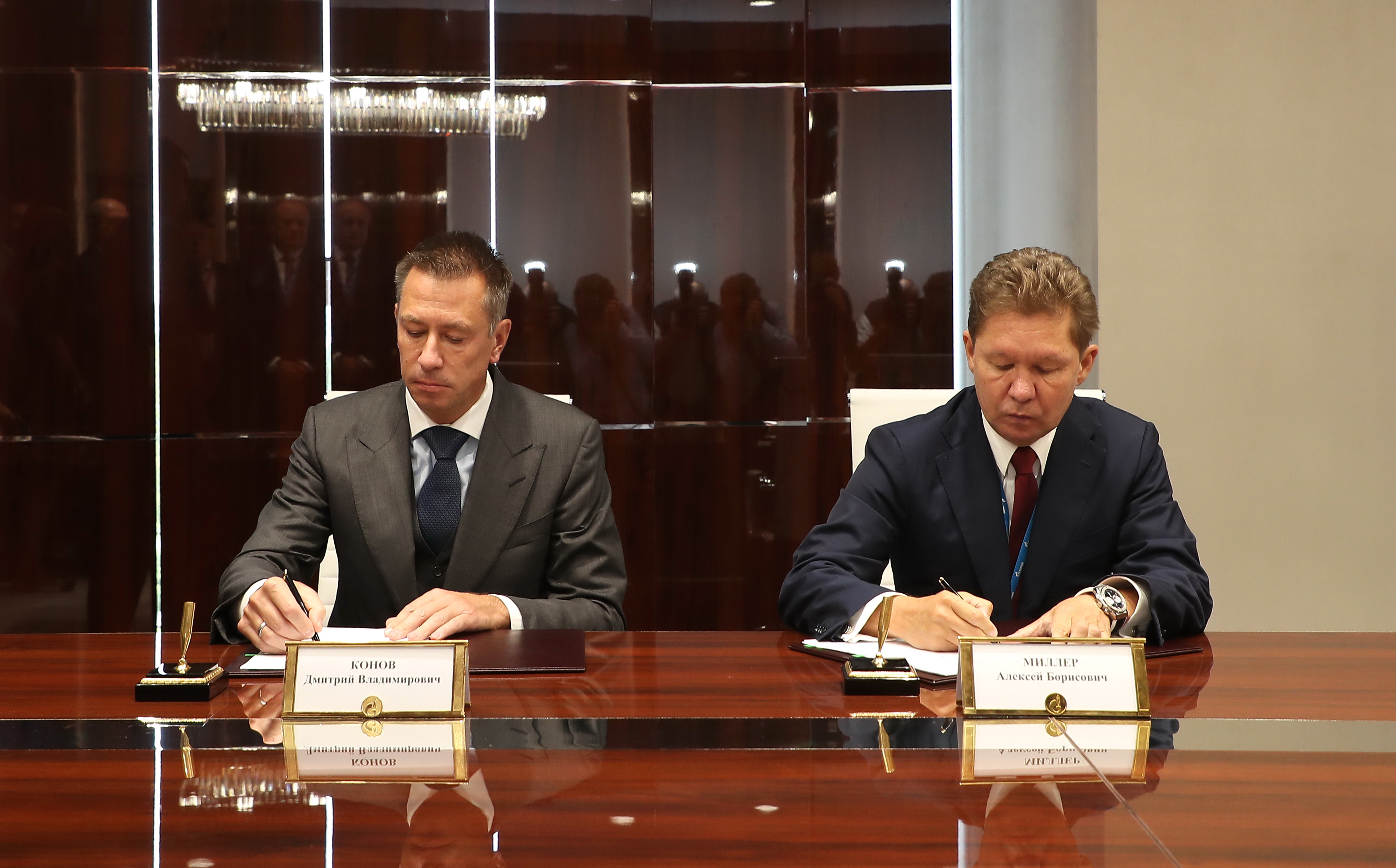
Release
Alexey Miller, Chairman of the Gazprom Management Committee, and Dmitry Konov, Chairman of the Management Board of SIBUR Holding (on behalf of the Amur Gas Chemical Complex), today signed at the 5th Eastern Economic Forum in Vladivostok a preliminary contract.
The document outlines the basic terms of long-term supplies of liquefied petroleum gases (LPG) and additional volumes of ethane fraction from the Amur Gas Processing Plant (GPP) to the future Amur Gas Chemical Complex (GCC) of SIBUR. According to the preliminary contract, the aggregate amount of feedstock deliveries may reach up to 1.5 million tons per year. The prices will be calculated based on the formulas agreed upon by the parties.
Thus, taking into account the contract for ethane fraction supplies (about 2 million tons per year) signed by the parties in May 2018, the overall amount of ethane fraction and LPG deliveries may total up to 3.5 million tons per year.
The enhanced cooperation between the companies will help set up a major gas processing and chemical cluster in the Amur Region, spurring socio-economic development in the Russian Far East.
Alexey Miller and Dmitry Konov also signed a Coordination Agreement. The parties intend to look into the possibility of joining forces in implementing investment projects, namely the gas processing facility in the Republic of Tatarstan and the Novy Urengoy Gas Chemical Complex in the Yamal-Nenets Autonomous Area.
Background
Gazprom’s Amur GPP will be one of the largest gas processing enterprises in the world. It will have the design capacity of 42 billion cubic meters of gas per year. The plant will comprise six process trains, two of which are planned to come online in 2021. In addition to natural gas, the GPP will produce ethane, propane, butane, pentane-hexane fraction, and helium.
SIBUR is developing a construction project for the Amur GCC, which will be technically affiliated with the Amur GPP. The increase in feedstock supplies will allow SIBUR to expand the design capacities of the GCC from 1.5 million tons of polyethylene to about 2.3 million tons of polyethylene and 400,000 tons of polypropylene.
